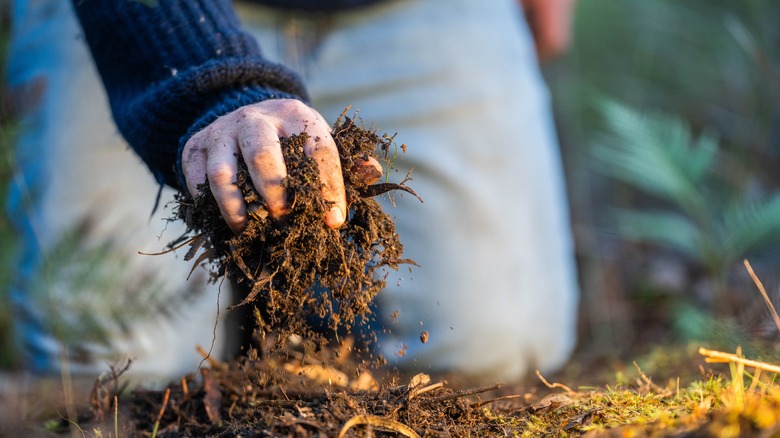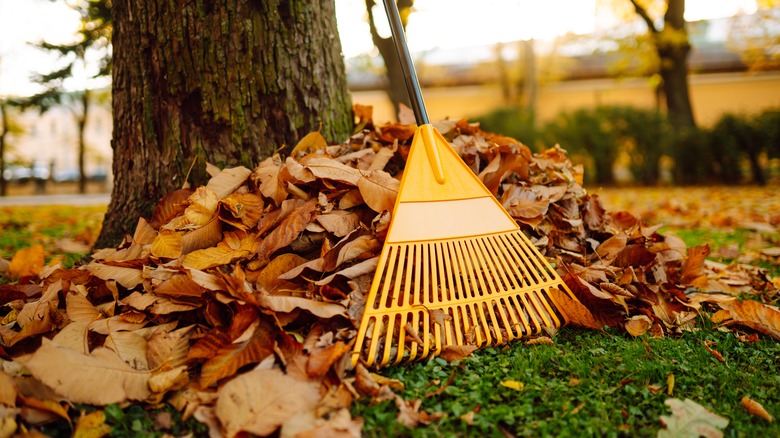Fall Is The Perfect Time To Collect Compost Materials
Autumn leaves are a highlight of the season — until they languish and overstay their welcome. While keeping a pile of leaves in your yard has some benefits, such as providing shelter for beneficial bugs, it might also attract snakes to your yard and other undesirable critters. Rather than raking them up and throwing them in the trash, use fall leaves as a compost material.
In addition to keeping your yard neater in the fall, using fall leaves to make your own DIY compost has other long-term benefits. You can use the compost in your spring garden beds, boosting the quality of the soil, adding vital nutrients, and improving drainage. In turn, you'll enjoy healthier spring plants.
Healthy compost requires a balance of "greens" to provide nitrogen and "browns" to provide carbon. Greens may include vegetable and fruit scraps, grass clippings, or coffee grounds; they also contain essential moisture. Browns are drier and help provide structure to aid airflow, and fall leaves happen to be a perfect candidate. Dry fall leaves also help prevent the greens from smelling and attracting pests as the compost breaks down. Just one large tree can produce the equivalent of $50 worth of plant food and humus. All you have to do is rake the leaves up, add a few ingredients, and check on it regularly.
How to turn leaf piles to compost
Composting is a fine art, with as many unique tools, recipes, and techniques as gardeners. However, you only need a couple of simple methods to compost your fall leaves for spring planting: a traditional compost pile and bag composting.
If creating a traditional compost pile in your yard, it should be in a shady area and at least 4 feet across and 3 feet high — but no more than 10 feet by 5 feet. First, create a 6-inch layer of fall leaves, add a thin layer of greens, and continue until you've used all your materials. (If you don't have scraps or clippings to use as greens, add a nitrogen-rich fertilizer, manure, or bone meal instead). Turn the pile every three weeks, and with about four turns before spring, the compost should be ready in time.
The second option, bag composting, starts with shredded leaves piled in a black plastic bag. To the bag, add ½ cup of nitrogen-rich fertilizer or two shovelfuls of manure, along with two shovelfuls of gardening soil and 1 to 2 quarts of water. Next, punch about a dozen holes in the side of the bag and place it in the garage. Turn the bag over every few days, and the compost will be ready in a few weeks. If you want to skip the turning, add 1 cup of hydrated lime, close the bag, and wait. However, this process takes a bit longer at six to 12 months. Your compost is ready when it looks and feels more similar to soil than leaves: dark and crumbly with an earthy smell. Add it to your spring garden beds as a dressing or mulch, or mix it into the soil while planting.

